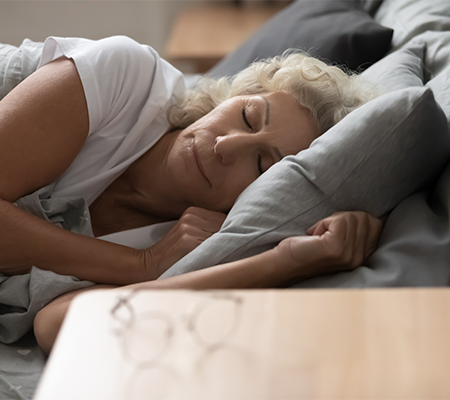
Hypoglossal nerve stimulator is a surgical procedure that places an implant pulse generator and moves the tongue forward when you breathe in during sleep.
This surgery is an additional option for people with mild to moderate sleep apnea. To receive the surgery, you must be age 18 or older and have a failed Continuous Positive Airway Pressure (CPAP) therapy test.
“Patients are usually very highly motivated to pursue treatment when they cannot tolerate CPAP because they are suffering from untreated obstructive sleep apnea,” said Dr. Jamal Ahmed, otolaryngologist (ear, nose and throat specialist) with Marshfield Clinic Health System. “This can markedly reduce one’s quality of life due to poor sleep.”
Alternative to CPAP therapy
To be a candidate for the stimulator surgery, you need to be diagnosed with obstructive sleep apnea, which can be done by a sleep medicine provider. If CPAP therapy is not tolerated, then a referral is made to an ear, nose and throat specialist (ENT) provider for evaluation of any obvious anatomic abnormalities that may be causing the obstructive sleep apnea.
Hypoglossal nerve stimulator surgery can completely cure sleep apnea without the need for a CPAP mask. Marshfield Clinic Health System was the first health care provider to offer it to central and northern Wisconsin in 2021.
There are two main steps for this surgery. First, while you are asleep, the surgeon evaluates by looking at the anatomy of your throat with a scope to see if you are a good candidate for surgery. If the implant is a viable option for you, then the second step of surgery happens on a separate day.
Once you are completely asleep under anesthesia, the surgery includes two incisions. The surgeon isolates nerve and its branches that move the tongue forward and places an electrode around this branch. In a pacemaker-type pocket under the right clavicle, surgeons place the implant. The implant connects to the sensor electrode which goes in the muscle that controls breathing.
Hypoglossal nerve stimulator relieves obstruction during sleep
One week later, your provider checks the incisions , and then activates the device one month after the surgery. Once activated, the device moves the tongue forward when you inhale while sleeping. This opens your throat and relieves the obstruction.
This stimulator has external components including a patient sleep remote. This remote allows you to activate the generator or configure the generator settings.
“We are excited for this option for patients because there are a lot of people who don’t tolerate CPAPs and this will greatly improve their quality of life,” Dr. Ahmed said.
Related Posts
Sleep studies provide clearer picture of sleep health






Leave a Reply